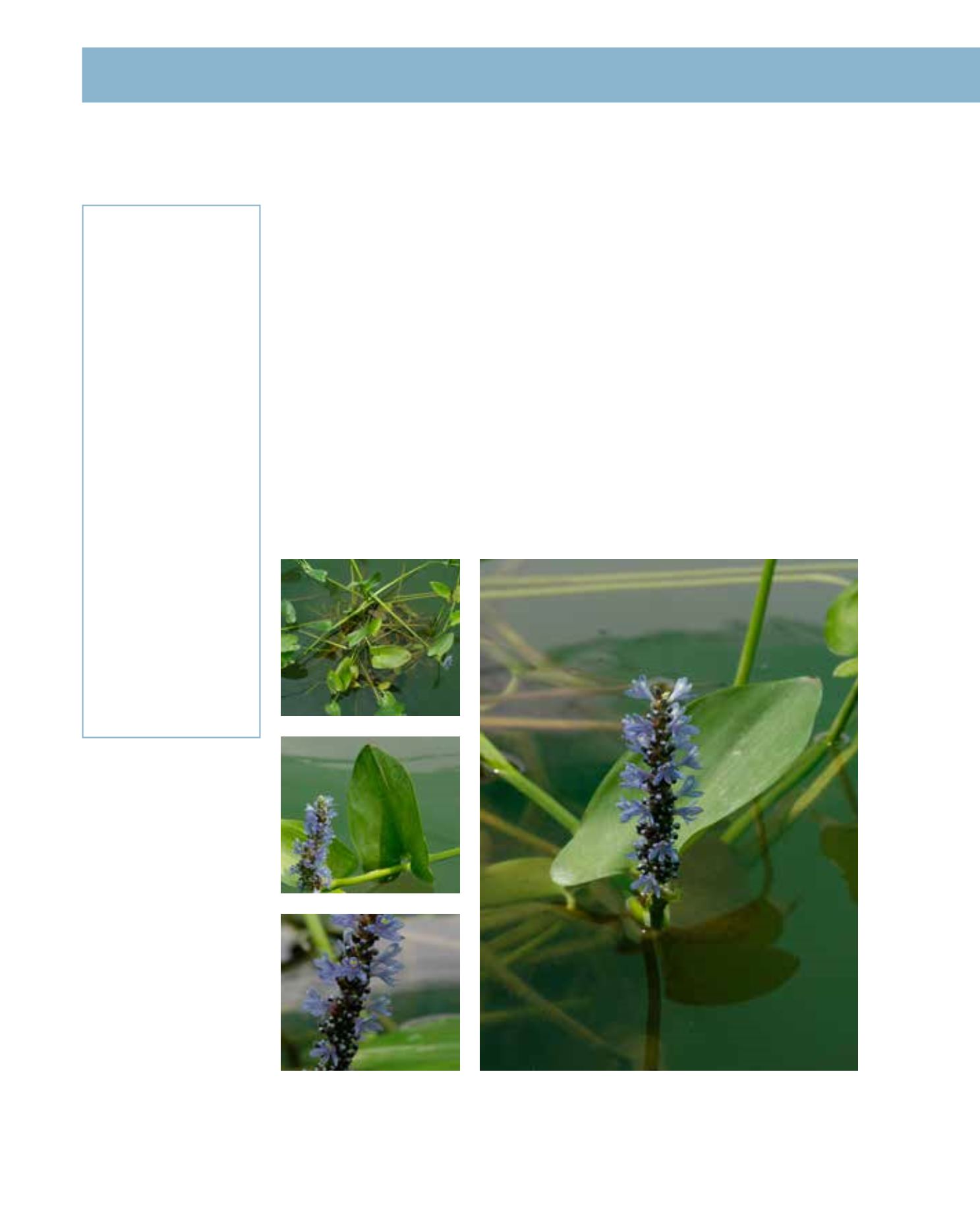

GENERAL
Origin
:
temperate,
sub-Mediterranean,
Mediterranean,
sub-tropical
Vigour
:
normal growth
rate
Humidity
:
semi-arid, semi-
humid, very
humid
Propagation :
division
Maintenance :
high
CONDITIONS
Urban climate :
vulnerable
Dessication :
vulnerable
Stagnant water :
resistant
Salinity/ppm :
low ( ppm)
Hardiness
:
-35°C
SHAPE
Type
:
perennial
Height
:
0.6 m-0.8 m
Spread
:
0.5 m-1 m
Foliage
:
deciduous
FLOWER
Colour
:
light blue, light
violet, bright blue
Size
:
10 cm - 15 cm
Period
:
May - October
FRUIT
Type of fruit :
capsule
Fruit size
:
0.6 cm
Pickerelweed, an aquatic or marsh perennial plant originating in tropical America, usually grows
to a height of about 1 metre. It has spread to many countries and climates throughout the world,
and is a good bog margin plant for ponds and lakes in Arriyadh, where it is not sensitive to frost,
unlike many aquatics of the tropics. The plant is composed of a cluster of large, erect, lance-
shaped or heart-shaped leaves up to 20 cm wide and 35 cm long, growing from a single basal
clump. Terminal spikes of pretty, violet-blue flowers, 15 cm long, appear from May to October. P.
cordata should be planted on the edge of a garden pond or water garden in full sun or light shade.
To stop it spreading in a small pond, it can be planted in a container, and then stood in shallow
water on the edge. Individual flowers last for only one day, and the entire spike will last for se-
veral days. Pickerelweed is highly susceptible to black fly. Fertilising is not necessary, since there
will be sufficient nutrients in the water. Propagation is by easy division of the rootstock of large
plants. Maintenance measures include tidying the plant to improve its appearance and occasional
limiting of unwanted growth.
241
Pontederia cordata,
Pontederiaceae
Pickerelweed
















